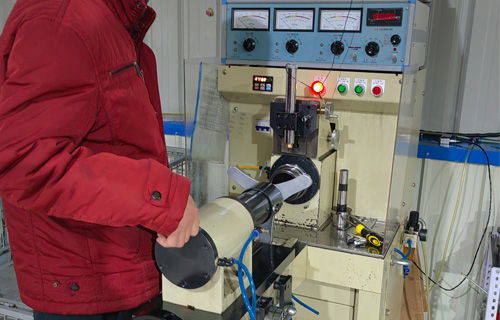
Dec . 01, 2024 15:06 Back to list
Deep Groove Ball Bearings with Retaining Rings for Enhanced Performance and Durability
Understanding Deep Groove Ball Bearings with Snap Rings
Deep groove ball bearings are one of the most commonly used types of bearings in various industrial applications. Their versatility, reliability, and ability to accommodate both radial and axial loads make them a preferred choice for engineers and designers alike. This article delves into the specifics of deep groove ball bearings, particularly focusing on those that incorporate snap rings.
What is a Deep Groove Ball Bearing?
A deep groove ball bearing consists of an inner and outer ring, a cage, and precision balls. The deep groove design allows the bearing to support heavy loads and provides high-speed performance. The deep raceways keep the balls positioned well, reducing the likelihood of friction and wear. This style of bearing can be employed in a wide range of applications, including electric motors, automotive components, and household appliances.
The Importance of Snap Rings
Snap rings, also known as retaining rings, play a crucial role in the function of deep groove ball bearings. They are fitted into a groove on the shaft or housing, securing the position of the bearing and preventing it from moving axially. This offers several advantages
1. Retention Snap rings ensure that the bearing stays in its designated position, despite the forces acting on it during operation. This is particularly important in applications where the bearing may be subject to shock loads or vibrations.
2. Ease of Assembly The use of a snap ring simplifies the assembly process, as it avoids the need for more complex fixing methods. This can lead to reduced manufacturing time and lower overall production costs.
3. Maintenance and Replacement With snap rings in place, replacing bearings becomes more straightforward. The snap ring can be removed easily, allowing for quick access to the bearing without needing to disassemble the entire assembly.
4. Increased Load Capacity When configured correctly, snap rings can help distribute loads more evenly across the bearing. This can enhance the lifespan of the bearing and improve its overall performance.
Applications of Deep Groove Ball Bearings with Snap Rings
Deep groove ball bearings with snap rings are utilized in numerous applications across various sectors
deep groove ball bearing with snap ring

- Automotive Industry They are commonly found in gearboxes, electric window lifters, and wheel hubs, where retention and stability are essential for performance. - Industrial Machinery These bearings are critical components in conveyor systems, pumps, and motors, where their ability to handle both radial and axial loads is vital.
- Consumer Electronics In devices like hard drives and printers, they provide smooth operation and durability, ensuring that the components can withstand the demands of daily use.
Choosing the Right Bearing
When selecting a deep groove ball bearing with a snap ring, several factors need to be considered
1. Load Capacity Evaluate the radial and axial load requirements for your specific application. Ensure the bearing selected can handle these loads adequately.
2. Speed Rating Consider the operational speed of the machinery. Different ball bearings come with varying speed ratings suitable for slow and fast machinery.
3. Material Bearings can be made from various materials, including steel, ceramic, and polymer. The choice of material affects the bearing's durability, weight, and corrosion resistance.
4. Snap Ring Design Different snap ring designs offer various levels of ease of installation and removal. Ensure that the selected snap ring suits the application's needs.
5. Environment Consider the operating environment, including temperature, exposure to chemicals, and the potential for contamination. This can influence the choice of seals, lubrication, and material.
Conclusion
Deep groove ball bearings with snap rings are a versatile and robust solution for many mechanical applications. Their unique design, combined with the functionality of snap rings, ensures stability and maintenance ease while providing exceptional load capacity and performance. When choosing the right bearing for your application, taking into account the various factors outlined above will help ensure optimal performance and longevity. Understanding these elements is crucial for engineers and designers aiming to create efficient and durable machinery.
Latest news
-
Premium Deep Groove Ball Bearings | High Speed & Reliability
NewsAug.29,2025
-
Durable Scaffolding Clamps - Secure & Reliable Tube Connectors
NewsAug.28,2025
-
Common Failures in Thrust Ball Bearings and Solutions
NewsAug.22,2025
-
How Tapered Roller Bearings Can Take Shock Loads
NewsAug.22,2025
-
Angular Bearings in High-Precision Spindles
NewsAug.22,2025
-
The Impact of Misalignment on Cylindrical Roller Bearing Performance
NewsAug.22,2025
